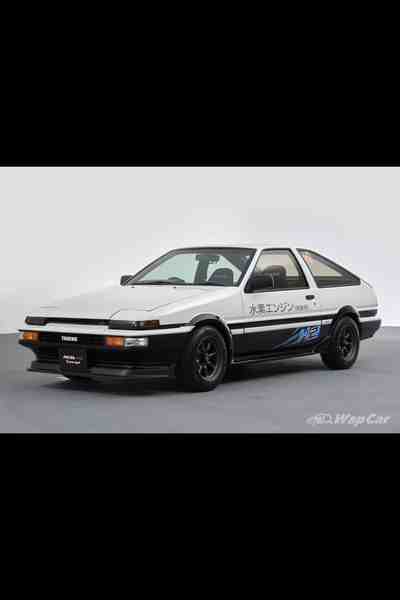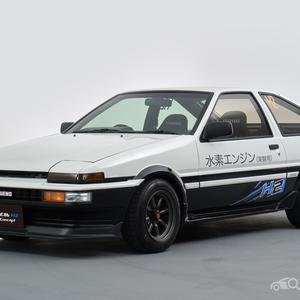In the small, idyllic town of Azusa nestled amidst the winding, hilly roads of rural Japan, lived a man named Kazuki Nakamura. Kazuki, a mechanic by day and avid car enthusiast by night, had a reputation that transcended his quiet hometown. His prized possession, a perfectly preserved and immaculately tuned Toyota AE86, was legendary amongst the local drift racing community.
Kazuki's AE86 was more than a car; it was a relic, a symbol of an era gone by. It was a stark white, the original paint glistening under the moonlight, a stark contrast to the polished, gleaming metal and carbon fiber of the modern racing machines. The red interior and iconic twin-cam 16-valve 4A-GE engine remained a testament to Kazuki's unwavering commitment to authenticity and performance.
One day, an announcement echoed through the valleys of Azusa. A national drift competition was being organized, with participants coming from all corners of the country. The winner would earn nationwide recognition and a considerable cash prize. More importantly, the event was going to be held on the treacherous mountain roads surrounding Azusa, Kazuki's home turf. He knew every curve, every apex, every blind corner of these roads like the back of his hand.
Despite the excitement brewing around him, Kazuki remained calm, choosing to keep a low profile. He spent his days in his workshop, tuning his AE86, testing and tweaking every part. Evenings were dedicated to his training regimen, a series of solo midnight drives where the streets became his racetrack and the moon his only audience.
As the competition drew closer, flashy racers and powerful modern machines began arriving in Azusa. Drivers and crews filled the local diners and accommodations, bringing an energy to the town it hadn't seen in decades. Among them, a man named Yuto Yamada, a popular, flashy, and overly confident racer from Tokyo, had made it clear that he was the one to beat. His decked-out, high-powered Nissan GT-R R35 was considered the pinnacle of modern racing technology.
On the night of the competition, the air was thick with anticipation. The sound of revving engines echoed through the mountains, blending seamlessly with the rhythmic chirping of cicadas. One by one, the drivers took off, their headlights cutting through the pitch-black roads as they disappeared around bends and up the mountainside.
Finally, it was Kazuki's turn. As the starting flag dropped, he shifted into gear, and the AE86 launched forward, its tail lights fading into the darkness. The roar of the 4A-GE echoed through the valley, harmonizing with the orchestra of nocturnal nature.
Kazuki danced with his AE86 through the curves, drifting perfectly around each bend, pushing the machine to its limit while retaining full control. His intimate knowledge of the road and complete trust in his AE86 created a symphony of man and machine, one which resonated with the very soul of the mountain.
In the end, it was Kazuki who crossed the finish line first, a whole minute ahead of Yuto and his GT-R. The crowd was stunned into silence before erupting into cheers. Despite the technology, the power, and the braggadocio of the modern racers, it was the quiet mechanic with his classic AE86 that had stolen the show.
That night, Kazuki's victory sent ripples through the racing community, proving that skill and intimate knowledge of one's vehicle could triumph over brute force and technology. As for Kazuki, he simply disappeared back into his workshop, the same as always, but with a grin that revealed his satisfaction.
Thus, the legend of Kazuki and his AE86 was born, echoing through the mountain passes of Azusa and far beyond, immortalizing the skilled man and his humble, powerful machine. The unleash of the skilled man was not a singular event but the beginning of a legend that would inspire generations of drivers to come.











Comments (0)
See all